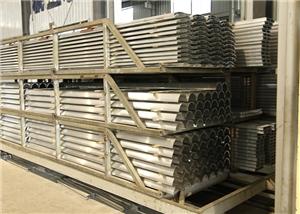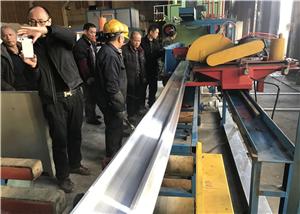Understanding Aluminum Extrusion Machines and Their Role in Manufacturing
Aluminum extrusion machines, such as the 660T or larger aluminum extrusion production lines, are equipment used to heat aluminum alloy raw materials (typically in the form of billets) and extrude them through a heated mold to form desired shapes. This process is widely used in manufacturing aluminum extruded sections for industries like construction, automotive, and aerospace. The raw material is heated to a certain temperature (usually around 500°C-520°C) and then pushed into a mold (with the mold temperature typically between 460°C-480°C) by the pressure from a hydraulic cylinder, creating complex cross-sectional shapes. This process is crucial for producing aluminum extruded sections and various other profile products.
The main components of an aluminum profile production line include a heating furnace, extrusion press, mold heating furnace, pulling equipment, straightening machine, cutting system, and heat treatment furnace (aging furnace). The extrusion press, which could be a profile extrusion machine, applies pressure to push the softened aluminum into the mold. After extrusion, the profiles go through processes of cooling, pulling, straightening, cutting, and aging. Aluminum extrusion systems are renowned for their ability to produce lightweight materials with high precision and strength, meeting the demand for aluminum extruded sections across various industries.




